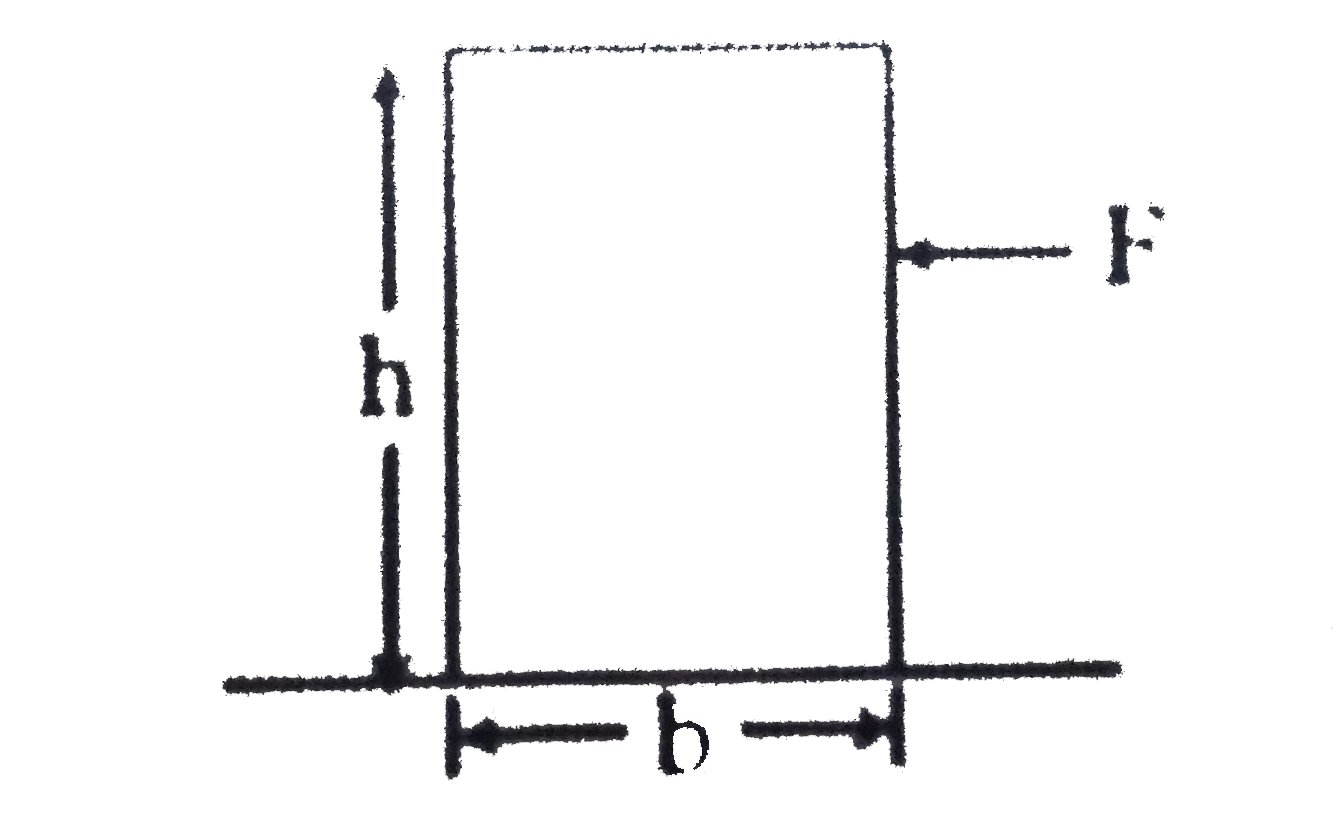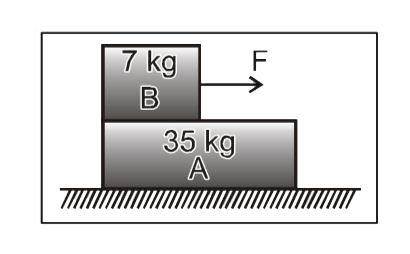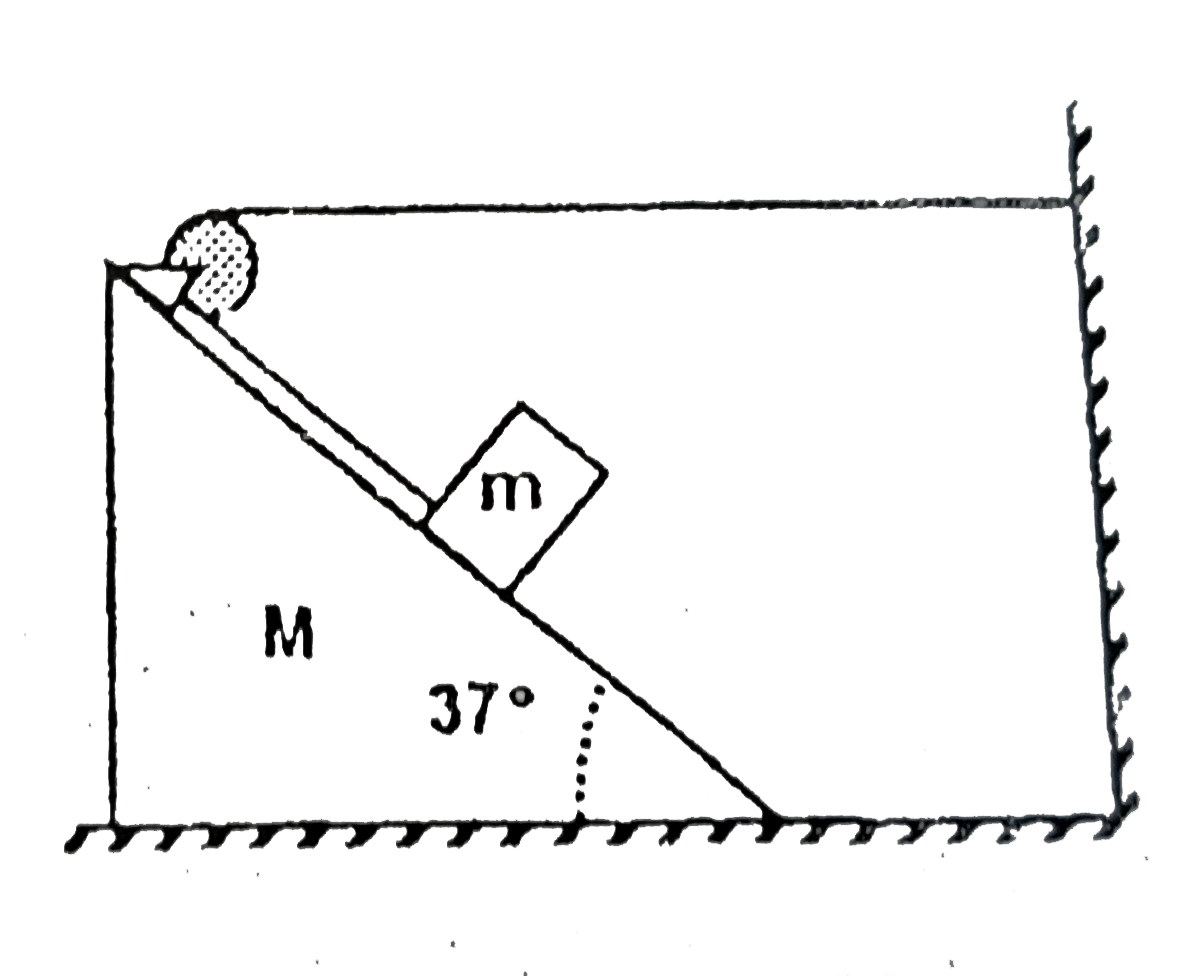Find the magnitude of the foce applied to a block of mass 5 kg at rest it it moves 36 m in the first 6 seconds. Neglect the force of friction.
Using s=ut+12at2 find the acceleration.
To find force, use F = ma
Topper's Solved these Questions
- BOOK - PEARSON IIT JEE FOUNDATIONCHAPTER - DYNAMICSEXERCISE - CONCEPT APPLICATION(LEVEL 3)15videos
DYNAMICS
- BOOK - PEARSON IIT JEE FOUNDATIONCHAPTER - DYNAMICSEXERCISE - CONCEPT APPLICATION(LEVEL 1)31videos
DYNAMICS
- BOOK - PEARSON IIT JEE FOUNDATIONCHAPTER - CHEMICAL EFFECTS OF ELECTRIC CURRENTEXERCISE - COMPETITION CORNER (MCQ)48videos
CHEMICAL EFFECTS OF ELECTRIC CURRENT
- BOOK - PEARSON IIT JEE FOUNDATIONCHAPTER - ELECTRICITYEXERCISE - CONCEPT APPLICATION (Level 3)10videos
ELECTRICITY
Similar Questions
Find the magnitude of the foce applied to a block of mass 5 kg at rest it it moves 36 m in the first 6 seconds. Neglect the force of friction.
View SolutionTwo blocks A and B of equal masses are attached to a string passing over a smooth pulley fixed to a wedge as shown in figure. Find the magnitude of acceleration of centre of mass of the two blocks when they are released from rest. Neglect friction.
 View Solution
View Solution
Knowledge Check
- Question 1 - Select One
Refer to the adjacent figure. A variable force F is applied to a body of mass 6 kg at rest. The body moves along X-axis as shown. The speed of the body at x = 5 m and x = 6 m is ____ and ______ respectively.
A0 m/s, 0 m/sB0 m/s, 2 m/sC2 m/s, 2 m/sD2 m/s, 4 m/s - Question 2 - Select One
A homogenous block of mass m, width b and height h is resting on a rough horizontal surface A horizontal force F is applied to it , which makes it to move with a constant velocity . The coefficient of friction between block and surface is μ Find the greatest height at which force F may be applied to slide the block with out tipping over
 Ab2μB2bμCbμD2√2bμ
Ab2μB2bμCbμD2√2bμ - Question 3 - Select One
A block of mass m=5 kg is placed on the wedge of mass M=32 kg as shown in the figure. Find the acceleration of wedge with respect to ground. (Neglect any type of friction. String and pulley are ideal )
 A12m/s2B35m/s2C43m/s2D34m/s2
A12m/s2B35m/s2C43m/s2D34m/s2
A block of mass 2.0 kg is pushed down an inclined plane of inclination 370 with a force of 20N cting parallelto the incline. It is found tht the block moves on the incline with an acceleration of 10ms2. If the blcok started from rest, find the work done a. by the applied force in the first second b. by the weight of the block in the first second and c. by the frictional force acting on the block in the first second. Take g=10ms2.
View SolutionBlock A of mass 5 kg is resting on a frictionless floor. Another block B of mass 7kg is resting on it as shown in the figure. The coefficient of friction between the blocks is 0.5 while kinetic friction is 0.4. If a force of 100 N is applied to block B, the acceleration of the block A will be (g=10ms−2) :
 View Solution
View SolutionWhen the three blocks of masses M, 2M and 2M in the system are released from rest, they accelerate with a magnitude of 1 m/s2. What is the coefficient of kinetic friction between block on the table and the table top? (neglect the force of friction in the pulleys and take g =10 m/s2)
View SolutionA block lies on a floor. (a) What is the magnitude of the frictional force on it from the floor ? (b) If a horizontal force of 5N is now applied to the block. But the block dose not move. What is the magnitude of the fricition on it ? (c) If the maximum value fcmax of the static frictional force on the block is 10 N, will the block move if the magnitude of the horizontally applied force is 8 N? (d) If it is 12 N ? (e) What is te magnitude of the frictional force in part (c) ?
View SolutionA block of mass m=5kg is placed on the wedge of mass M=32kg as shown in the figure. Find the acceleration of wedge with respect to ground. (Neglect any type of friction. Spring and pulley are ideal)
 View Solution
View Solution

